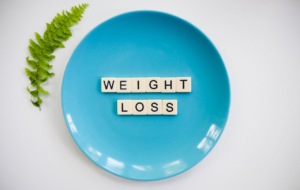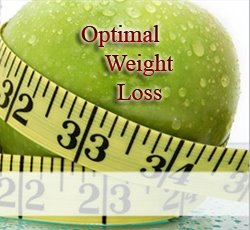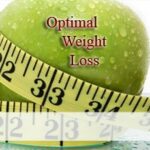The Ultimate Guide to Healthy Meal Planning for Weight Loss
Embarking on a weight loss journey requires not just determination and willpower, but also a solid plan to ensure you’re fueling your body with the right nutrients. Meal planning is one of the most effective strategies to help you achieve your weight loss goals. By taking the time to plan your meals, you can make healthier choices, save time and money, and avoid the temptation of unhealthy foods. Here’s your ultimate guide to healthy meal planning for weight loss.
1. Understand Your Nutritional Needs
Before diving into meal planning, it’s essential to understand your nutritional needs. Weight loss is often about creating a calorie deficit, but it’s equally important to ensure you’re getting a balanced diet rich in essential nutrients. Aim to include a variety of foods from all food groups:
- Proteins: Lean meats, fish, eggs, beans, and legumes.
- Carbohydrates: Whole grains, fruits, and vegetables.
- Fats: Healthy fats like avocados, nuts, seeds, and olive oil.
- Vitamins and Minerals: A diverse range of fruits and vegetables will provide essential vitamins and minerals.
Consult with a healthcare provider or a registered dietitian to determine your specific nutritional requirements based on your age, gender, activity level, and weight loss goals.

2. Set Realistic Goals
Setting realistic and achievable goals is crucial for long-term success. Aim for a gradual weight loss of 1-2 pounds per week, which is considered healthy and sustainable. Break your overall weight loss goal into smaller milestones and focus on these to stay motivated. Remember, consistency is key, and making small, manageable changes over time is more effective than drastic, short-term measures.
3. Plan Your Meals in Advance
Planning your meals in advance helps you stay on track and avoid impulsive eating. Here’s how to get started:
- Create a Weekly Menu: Outline your meals for the week, including breakfast, lunch, dinner, and snacks. Consider your schedule and plan meals that fit your lifestyle.
- Use a Shopping List: Based on your weekly menu, create a shopping list of all the ingredients you’ll need. Stick to the list to avoid buying unhealthy snacks and convenience foods.
- Prep in Bulk: Spend a few hours on the weekend preparing meals and snacks for the week. Chop vegetables, cook grains, and portion out snacks to save time during busy weekdays.
4. Focus on Whole Foods
Whole foods are minimally processed and packed with nutrients, making them ideal for weight loss. Here are some tips for incorporating more whole foods into your diet:
- Choose Fresh Produce: Aim to fill half your plate with fruits and vegetables. They are low in calories and high in fiber, which helps keep you full.
- Opt for Whole Grains: Replace refined grains with whole grains like brown rice, quinoa, and whole-wheat bread. Whole grains are more filling and have more nutrients.
- Select Lean Proteins: Include sources of lean protein like chicken, turkey, fish, tofu, and legumes. Protein helps build muscle and keeps you satiated.
5. Control Portion Sizes
Portion control is a crucial aspect of weight loss. Even healthy foods can contribute to weight gain if consumed in large quantities. Here are some tips to help you manage portion sizes:
- Use Smaller Plates: Eating from smaller plates can help control portion sizes and prevent overeating.
- Measure Servings: Use measuring cups and spoons to ensure you’re eating the right amount of food.
- Listen to Your Body: Pay attention to your hunger and fullness cues. Eat slowly and stop when you feel satisfied, not stuffed.
6. Incorporate Balanced Meals
Each meal should include a balance of macronutrients: carbohydrates, proteins, and fats. This ensures you’re getting the energy and nutrients you need to stay active and healthy. Here’s a simple formula to create balanced meals:
- Fill Half Your Plate with Vegetables: Non-starchy vegetables like leafy greens, broccoli, and bell peppers are low in calories and high in nutrients.
- Include a Source of Lean Protein: Add a portion of lean protein like grilled chicken, tofu, or beans.
- Add a Whole Grain or Starchy Vegetable: Include a serving of whole grains like quinoa or brown rice, or starchy vegetables like sweet potatoes.
- Incorporate Healthy Fats: Add a small amount of healthy fat, such as a drizzle of olive oil, a few slices of avocado, or a handful of nuts.
7. Stay Hydrated
Hydration is essential for overall health and can support your weight loss efforts. Drinking water before meals can help control appetite and prevent overeating. Aim to drink at least eight cups of water a day, and more if you’re physically active. Avoid sugary drinks and limit your intake of caffeinated beverages, which can lead to dehydration.
8. Snack Smartly
Snacking can be part of a healthy diet if done correctly. Choose snacks that are nutrient-dense and help keep you full between meals. Here are some healthy snack ideas:
- Fresh Fruit and Nut Butter: Pair apple slices or a banana with a tablespoon of almond or peanut butter.
- Greek Yogurt with Berries: Top a serving of Greek yogurt with fresh berries for a protein-packed snack.
- Vegetable Sticks with Hummus: Enjoy carrot sticks, cucumber slices, or bell pepper strips with a serving of hummus.
- Nuts and Seeds: A small handful of unsalted nuts or seeds can provide healthy fats and protein.
9. Be Mindful of Eating Out
Eating out can be challenging when you’re trying to lose weight, but it’s possible to make healthier choices. Here are some tips for dining out:
- Choose Wisely: Opt for grilled, baked, or steamed dishes instead of fried or creamy options.
- Control Portions: Consider sharing a main course or asking for a half portion. You can also request a to-go box at the beginning of the meal and pack away half for later.
- Watch the Extras: Be mindful of high-calorie extras like bread, appetizers, and desserts. If you choose to indulge, do so in moderation.
10. Stay Consistent and Flexible
Consistency is key to successful weight loss, but it’s also important to be flexible. Life is unpredictable, and there will be times when you can’t stick to your meal plan perfectly. Don’t be too hard on yourself if you have an off day. Instead, focus on getting back on track with your next meal. Remember, it’s the overall pattern of your eating habits that matters most.
Conclusion
Healthy meal planning is a powerful tool for weight loss. By understanding your nutritional needs, setting realistic goals, and focusing on whole foods and portion control, you can create a sustainable plan that supports your weight loss journey. Incorporate balanced meals, stay hydrated, snack smartly, and be mindful when eating out to stay on track. Remember, consistency and flexibility are essential. Start planning your meals today and take the first step towards a healthier, happier you.

